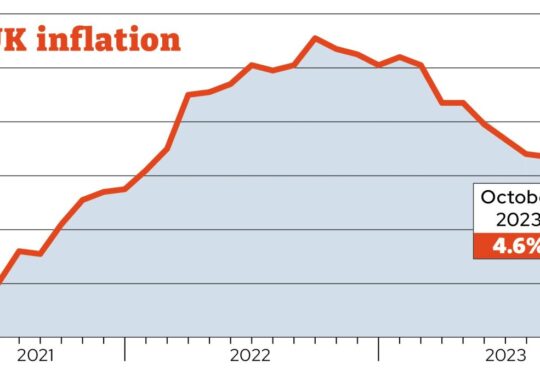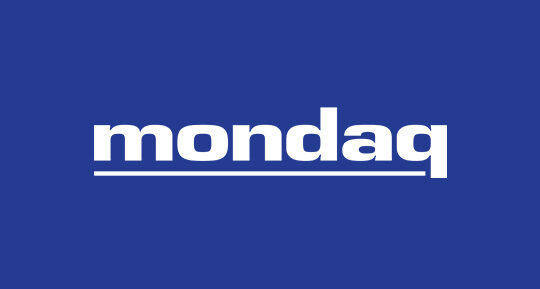Frankfurt am Main, October 21, 2022 — Moody’s Investors Service (“Moody’s”) has today affirmed the Government of Slovenia’s (Slovenia) long-term issuer and senior unsecured bond ratings at A3. The outlook remains stable.
The affirmation of Slovenia’s A3 ratings balances the following key drivers:
1. Public finances challenged by the energy crisis and the medium-term demographic outlook;
2. Slovenia’s relative economic resilience to shocks, as reflected in a swift recovery from the pandemic and solid medium-term growth prospects;.
The stable outlook balances Slovenia’s robust economic resilience and solid policy capability as well as a favourable debt affordability, with a higher-than-peers debt burden and the significant challenges posed by the energy crisis and a rapidly ageing population. Moreover, the stable outlook reflects Moody’s expectations that Slovenia’s economic and fiscal metrics will perform in line with similarly rated peers. It also captures Moody’s view that the pension reform is unlikely to make significant progress in the next 12 to 18 months, which poses a credit constraint.
Slovenia’s long-term local and foreign-currency bond country ceilings remain unchanged at Aaa. For euro area countries, a six-notch gap between the local currency ceiling and the local currency rating as well as a zero-notch gap between the local currency ceiling and foreign currency ceiling is typical, reflecting benefits from the euro area’s strong common institutional, legal and regulatory framework, as well as liquidity support and other crisis management mechanisms. It is also in line with Moody’s view of de minimis exit risk from the euro area.
RATINGS RATIONALE
RATIONALE FOR AFFIRMATION OF A3 RATINGS
FIRST DRIVER: PUBLIC FINANCES CHALLENGED BY THE ENERGY CRISIS AND THE MEDIUM-TERM DEMOGRAPHIC OUTLOOK
The first driver of the rating affirmation is based on the challenges Slovenia’s public finances face in light of the energy crisis and the adverse medium-term demographic outlook. In 2021, the decline in the debt burden to 74.5% of GDP from 79.6% of GDP in 2020 reflected a reduction in the deficit (to 4.7% of GDP from 7.7% of GDP) as revenues accelerated and pandemic-related expenditures receded. Debt affordability continued to improve in both years, with a decline in the cost of issuance despite higher borrowing needs as the ECB’s very accommodative monetary policy supported euro area sovereigns. As a result, the interest payments-to-revenue ratio reached 3.7% and 2.8% in 2020 and 2021, respectively. However, Slovenia’s fiscal metrics compare unfavourably to the A3 median due the country’s higher debt burden, while debt affordability is in line.
Looking ahead, Moody’s forecasts Slovenia’s general government deficit to reach 3.8% of GDP in 2022, 5.6% of GDP in 2023 and 3.5% of GDP in 2024. Revenue growth should remain dynamic, benefitting in the short-term from higher inflation. On the spending side, phasing out of pandemic-related support measures is expected to take off 3.0% of GDP of public spending in 2022 compared to 2021. As a result, Moody’s expects Slovenia’s debt-to-GDP ratio to reach 70.6% in 2022 and 71.2% in 2023.
However, Moody’s believes that risks to the fiscal projection are to the downside considering the elevated uncertainty and the government’s policy response to smooth the impact of the military conflict in Ukraine through energy prices on consumers and businesses. The government estimates the direct fiscal cost to reach EUR 1.8 billion (2.9% of GDP) in 2023. In addition, the authorities have put forward guarantees and liquidity mechanisms to support energy companies worth around EUR 3.2 billion (5.2% of GDP). While these measures do not present a direct cost for the budget, the materialization of adverse scenarios due to further shocks in the energy market would eventually lead to the crystallization of these contingent liabilities onto the government’s balance sheet.
Slovenia’s large cash buffer (16.4% of GDP as of the end of the second quarter of 2022) supports the government’s comfortable liquidity position. The forward-looking debt management by the Slovene authorities largely shields the country from an abrupt rise in interest payments, with the lengthening of Slovenia’s debt average maturity to 10 years in 2022 from 5.7 years in 2013. Furthermore, the fact that 99.3% of Slovenia’s outstanding debt has been issued at a fixed interest rate, and that 97.6% of Slovenia’s debt is labelled in euros are additional mitigants. That said, the shift in monetary policy by the ECB will raise Slovenia’s interest payments over time. Under its baseline scenario, Moody’s forecasts Slovenia’s interest-to-revenue ratio to rise from 2.8% in 2021 to 3.3 % in 2024, and the interest-to-GDP ratio from 1.2% in 2021 to 1.5% in 2024.
Over the medium-term, Slovenia’s ageing population represents a substantial challenge for the country’s public finances sustainability. According to the 2021 European Commission ageing report, Slovenia will see the EU’s third largest increase in the total cost of ageing over the next five decades, after Slovakia and Luxembourg: total cost of ageing could reach round 30% of GDP in Slovenia in 2070, up from around 20% of GDP currently. Mindful of this challenge, the Slovene authorities included a pension reform project in the National Recovery and Resilience programme (NRRP) to ensure fiscal sustainability and adequacy of pensions, as well as a labour market reform to incentivize older workers to stay active for longer. However, Moody’s doesn’t anticipate a swift implementation of the reform given the topic’s sensitivity and the completion deadline set out in the NRRP (end of 2024).
SECOND DRIVER: SLOVENIA’S RELATIVE ECONOMIC RESILIENCE TO SHOCKS, AS REFLECTED IN A SWIFT RECOVERY FROM THE PANDEMIC AND SOLID MEDIUM-TERM GROWTH PROSPECTS
The second driver of the affirmation of the rating reflects Slovenia’s economic resilience to a succession of shocks and the country’s support by European Union (EU, Aaa stable) funds inflows in the context of the Recovery and Resilience Facility (RRF) and the regular funding under the 2021-2027 cohesion policy.
Prior to the coronavirus pandemic, the reduction in Slovenia’s macroeconomic imbalances had enhanced economic actors’ shock absorption capacity, as reflected in stronger balance sheets for households and corporates, and significantly sounder financial institutions amid the authorities large-scale recapitalization and privatization programme.
Against this backdrop, the 2020 pandemic-induced recession, with a 4.3% drop in real GDP, was mild and short-lived, followed by a strong 8.2% rebound in 2021. Moody’s forecasts Slovenia’s real GDP to expand by 5.5% in 2022. Domestic demand and export of services have supported the recovery, with private consumption benefitting from the rebound in the tourism sector as both domestic and international travelling resumes. Data for January to August 2022 show that overnight stays reached their 2019 levels. The rise in employment and investment activity is also supporting domestic demand.
However, in the context of the military conflict in Ukraine and its ripple effects on the global economy, the balance of risks is tilted to the downside. While Slovenia’s energy dependence on Russia is relatively low, high gas and oil prices, coupled with rising food, goods and services inflation is negatively affecting household incomes and corporate margins. Moody’s forecasts Slovenia’s average inflation to reach 7.6% this year, mainly driven by energy and food prices.
For 2023 and 2024, Moody’s expects Slovenia’s real GDP growth to reach 1.0% and 1.8%, respectively, below the economy’s potential of around 2.5%. In parallel, average inflation is expected to reach 7.0% and 3.3% in 2023 and 2024, respectively. The projection assumes a significant slowdown in the euro area, Slovenia’s main export market. Domestically, the forecast assumes a gradual implementation of public investments under the Recovery and Resilience Programme (RRP), with public investment set to reach above 6% of GDP in 2023, well above the 1995-2021 average of 4% of GDP. Under the RRF, Slovenia is set to benefit from EUR 2.2 billion (4.2% of GDP), including EUR 1.5 billion in grants and EUR 0.7 billion in loans. This comes in addition to EUR 3.3 billion (6.3% of GDP) in EU cohesion policy funds for the 2021-2027 period.
As a result, Slovenia’s potential growth will likely be driven by capital investment and total factor productivity in the coming years. Overall, potential growth in Slovenia is estimated by the European Commission and the government to hover between 2.5% and 3% and has been largely unaffected by the pandemic.
From a peer comparison perspective, Slovenia’s economic resilience performs in line with the A3 median, with solid economic as well as governance metrics: Slovenia benefits from a wealthy economy combined with mature institutions, with average growth and economic volatility similar to that of the A3 median.
RATIONALE FOR THE STABLE OUTLOOK
The stable outlook balances Slovenia’s solid economic resilience and policy capability as well as favourable debt affordability with a higher-than-peers debt burden and the significant challenges posed by the energy crisis and an ageing population. The stable outlook reflects Moody’s expectations that Slovenia’s economic and fiscal metrics will perform in line with similarly rated peers. It also captures Moody’s view that the pension reform is unlikely to make significant progress in the next 12 to 18 months, which poses a credit constraint.
ENVIRONMENTAL, SOCIAL AND GOVERNANCE CONSIDERATIONS
Slovenia’s overall E issuer profile score is neutral to low (E-2), reflecting low exposure to environmental risks across all categories.
Moody’s assesses Slovenia’s S issuer profile score as moderately negative (S-3), reflecting low exposure to social risks across most categories, with the notable exception of demographics. In the absence of significant reforms, above all to the pensions system, population ageing is projected to lead to a significant increase in ageing-related spending over coming decades.
Slovenia receives a positive G issuer profile score of (G-1). Although Moody’s generally views the quality and effectiveness of Slovenia’s institutions as being strong across the board, its institutions have occasionally proven to be slow in tackling major policy challenges such as the country’s banking sector crisis or pension reform.
Slovenia’s ESG Credit Impact Score is neutral-to-low (CIS-2), reflecting low exposure to environmental risk and moderately negative exposure to social risks, as well as a very strong governance profile.
FACTORS THAT COULD LEAD TO AN UPGRADE OR DOWNGRADE OF THE RATINGS
WHAT COULD CHANGE THE RATINGS UP
Upward pressure could build on the rating if Moody’s were to see a firm decline in Slovenia’s debt burden, reflecting a steady reduction in the deficit despite the impact on public spending of higher interest rates. The adoption of a pension reform clearly mitigating the consequences of ageing on public finances would be credit positive, as would policies raising the participation of workers above 55 years in the labour force.
WHAT COULD CHANGE THE RATINGS DOWN
Downward pressure could build on the rating if Moody’s were to see a sustained weaker-than-expected economic performance against the backdrop of the energy crisis in Europe. In such a scenario, evidence of permanent scarring would compound pre-existing challenges for Slovenia’s public finances, raising the likelihood of a significant increase in the debt trend. In the context of the pension reform, unfinanced new benefits implying additional budgetary costs would be credit negative.
The principal methodology used in these ratings was Sovereign Ratings Methodology published in November 2019 and available at https://ratings.moodys.com/api/rmc-documents/63168. Alternatively, please see the Rating Methodologies page on https://ratings.moodys.com for a copy of this methodology.
The weighting of all rating factors is described in the methodology used in this credit rating action, if applicable.
REGULATORY DISCLOSURES
For further specification of Moody’s key rating assumptions and sensitivity analysis, see the sections Methodology Assumptions and Sensitivity to Assumptions in the disclosure form. Moody’s Rating Symbols and Definitions can be found on https://ratings.moodys.com/rating-definitions.
For ratings issued on a program, series, category/class of debt or security this announcement provides certain regulatory disclosures in relation to each rating of a subsequently issued bond or note of the same series, category/class of debt, security or pursuant to a program for which the ratings are derived exclusively from existing ratings in accordance with Moody’s rating practices. For ratings issued on a support provider, this announcement provides certain regulatory disclosures in relation to the credit rating action on the support provider and in relation to each particular credit rating action for securities that derive their credit ratings from the support provider’s credit rating. For provisional ratings, this announcement provides certain regulatory disclosures in relation to the provisional rating assigned, and in relation to a definitive rating that may be assigned subsequent to the final issuance of the debt, in each case where the transaction structure and terms have not changed prior to the assignment of the definitive rating in a manner that would have affected the rating. For further information please see the issuer/deal page for the respective issuer on https://ratings.moodys.com.
For any affected securities or rated entities receiving direct credit support from the primary entity(ies) of this credit rating action, and whose ratings may change as a result of this credit rating action, the associated regulatory disclosures will be those of the guarantor entity. Exceptions to this approach exist for the following disclosures, if applicable to jurisdiction: Ancillary Services, Disclosure to rated entity, Disclosure from rated entity.
The ratings have been disclosed to the rated entity or its designated agent(s) and issued with no amendment resulting from that disclosure.
These ratings are solicited. Please refer to Moody’s Policy for Designating and Assigning Unsolicited Credit Ratings available on its website https://ratings.moodys.com.
Regulatory disclosures contained in this press release apply to the credit rating and, if applicable, the related rating outlook or rating review.
Moody’s general principles for assessing environmental, social and governance (ESG) risks in our credit analysis can be found at https://ratings.moodys.com/documents/PBC_1288235.
The Global Scale Credit Rating on this Credit Rating Announcement was issued by one of Moody’s affiliates outside the UK and is endorsed by Moody’s Investors Service Limited, One Canada Square, Canary Wharf, London E14 5FA under the law applicable to credit rating agencies in the UK. Further information on the UK endorsement status and on the Moody’s office that issued the credit rating is available on https://ratings.moodys.com.
Please see https://ratings.moodys.com for any updates on changes to the lead rating analyst and to the Moody’s legal entity that has issued the rating.
Please see the issuer/deal page on https://ratings.moodys.com for additional regulatory disclosures for each credit rating.
Olivier Chemla
Vice President – Senior Analyst
Sovereign Risk Group
Moody’s Deutschland GmbH
An der Welle 5
Frankfurt am Main, 60322
Germany
JOURNALISTS: 44 20 7772 5456
Client Service: 44 20 7772 5454
Alejandro Olivo
MD-Sovereign/Sub Sovereign
Sovereign Risk Group
JOURNALISTS: 44 20 7772 5456
Client Service: 44 20 7772 5454
Releasing Office:
Moody’s Deutschland GmbH
An der Welle 5
Frankfurt am Main, 60322
Germany
JOURNALISTS: 44 20 7772 5456
Client Service: 44 20 7772 5454






